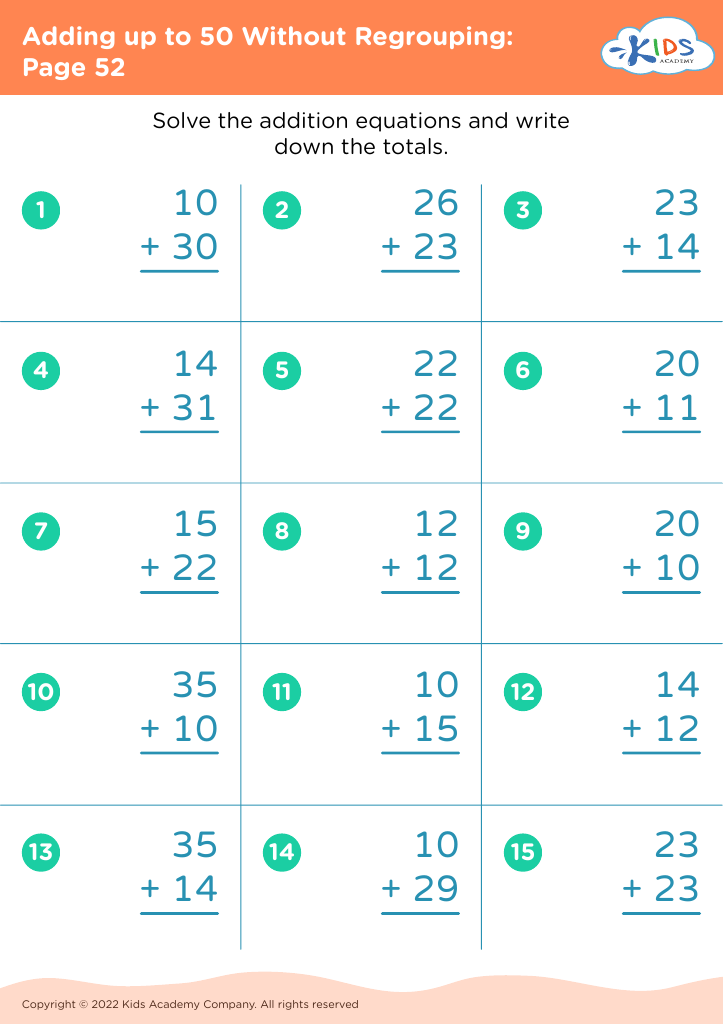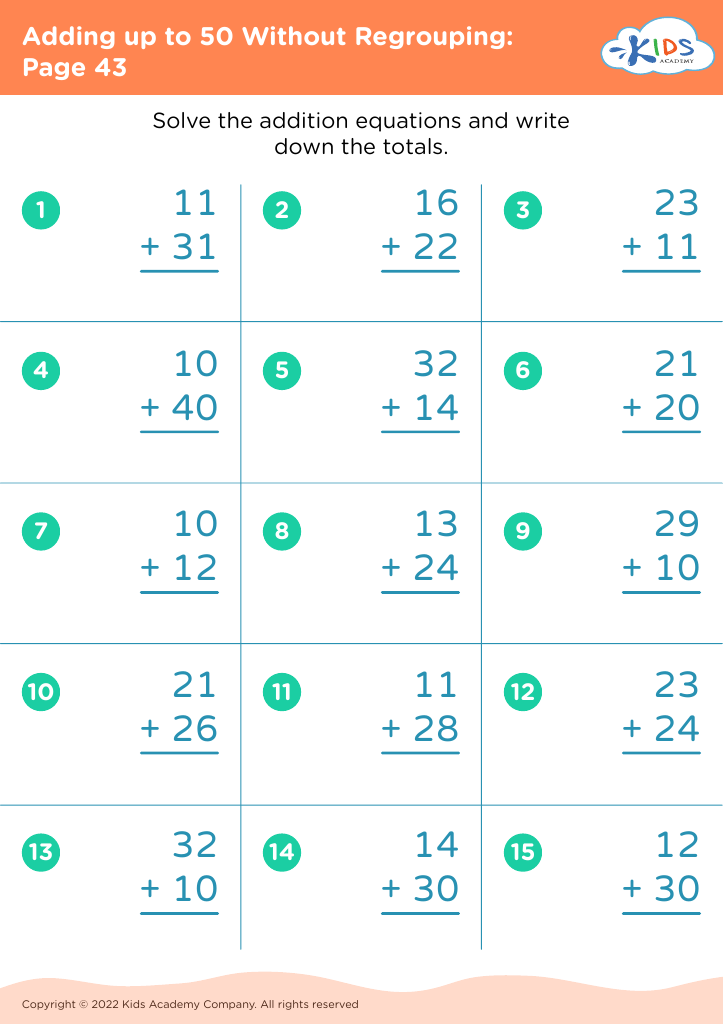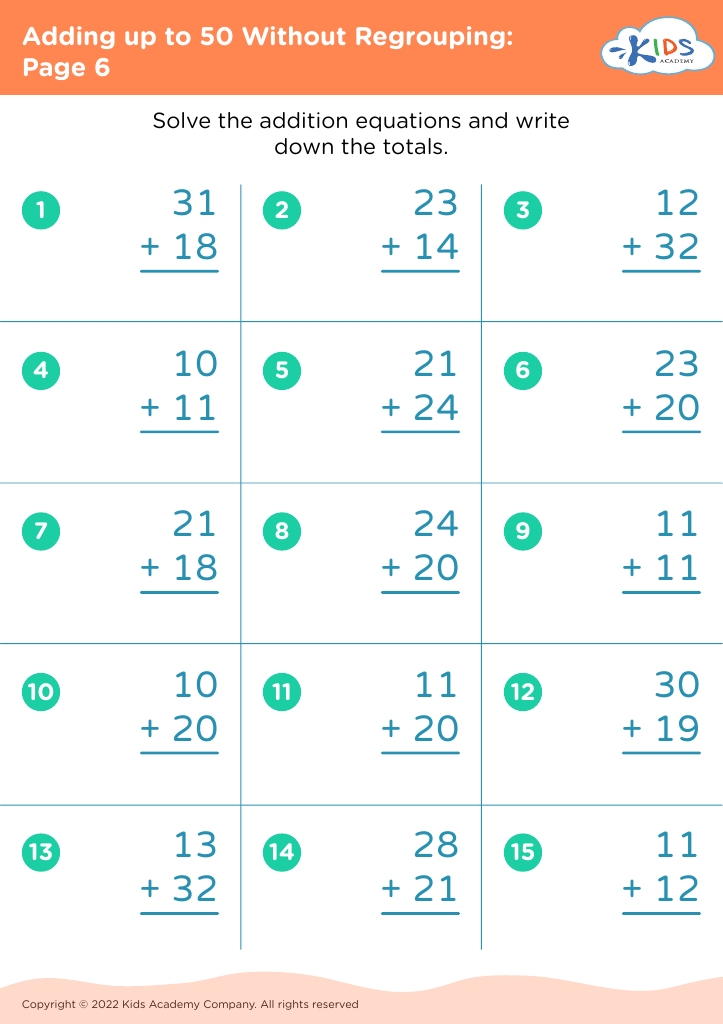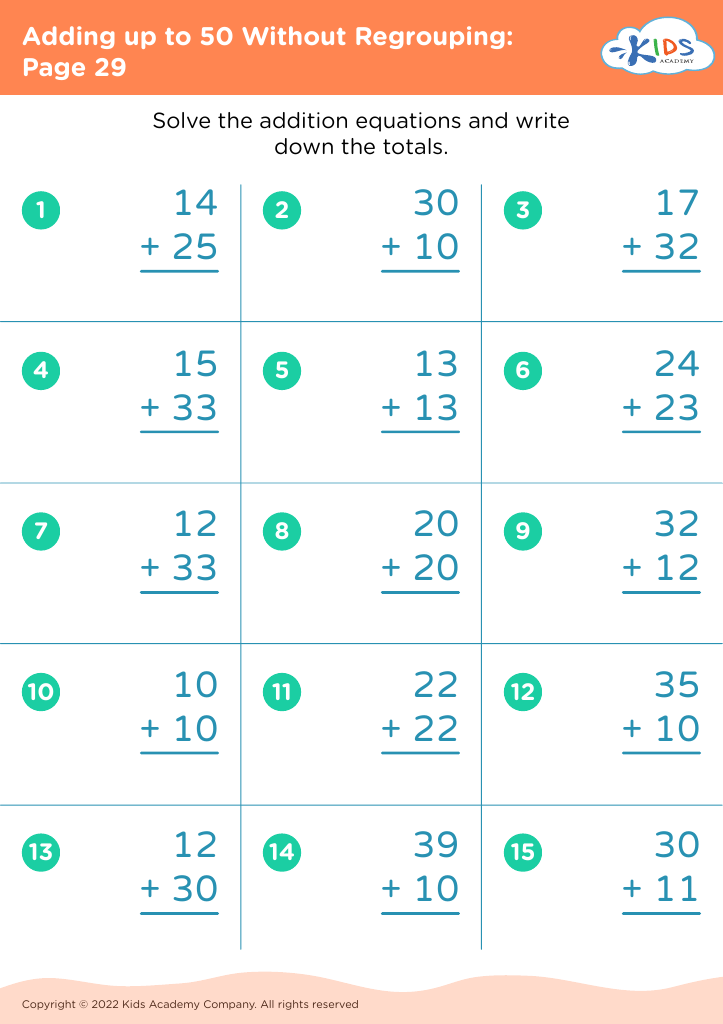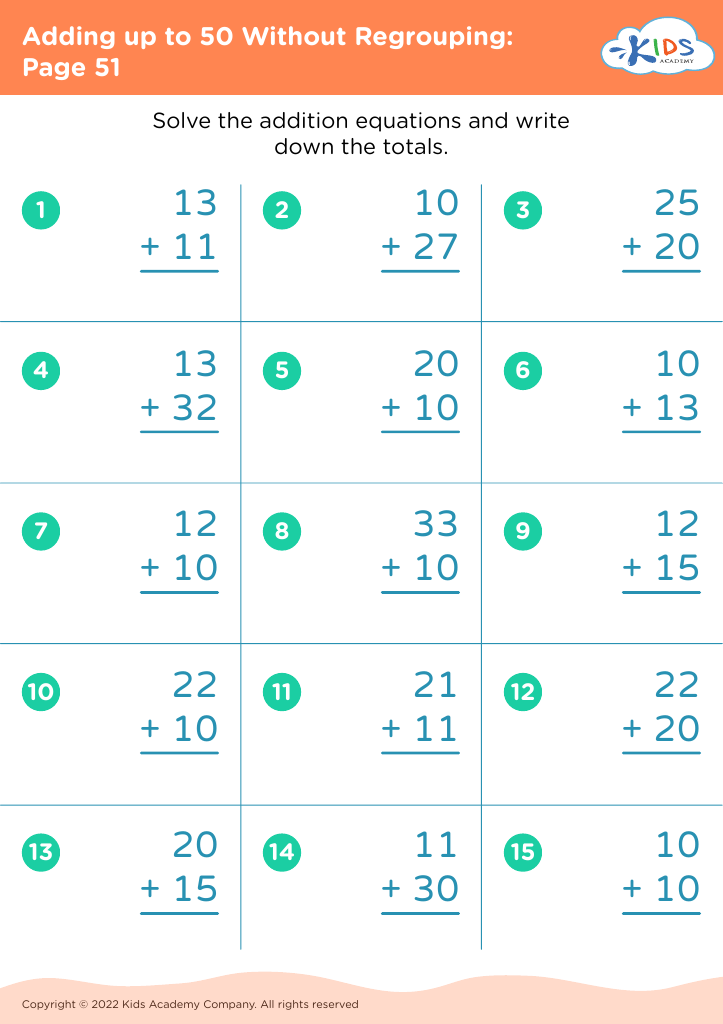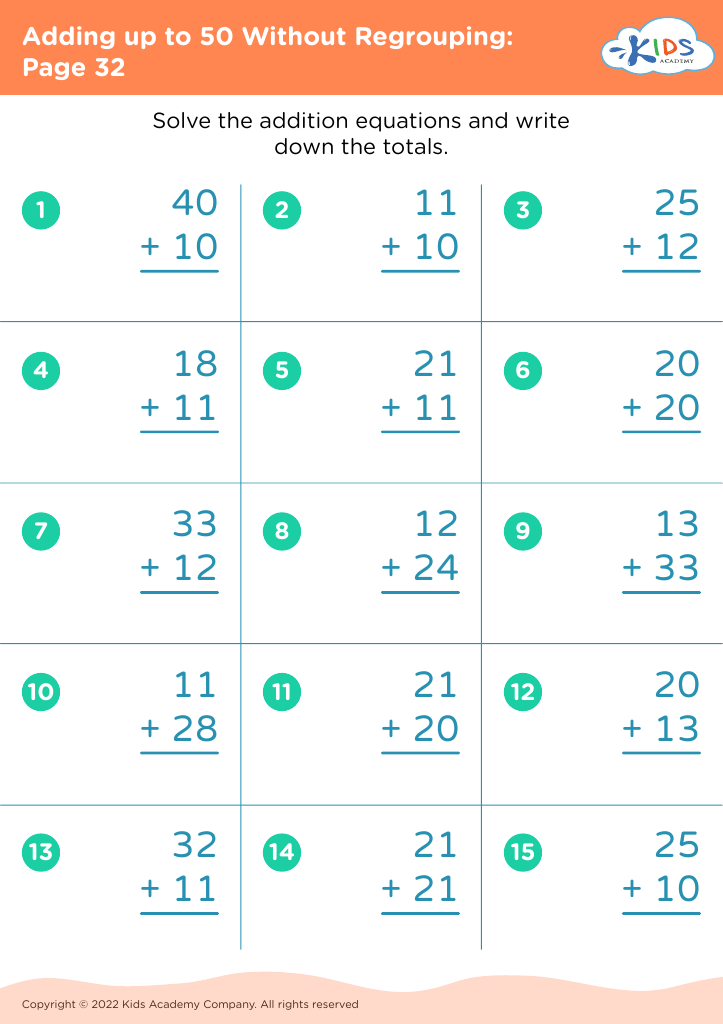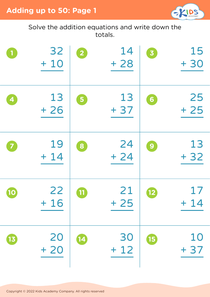Identifying shapes Grade 2 Adding up to 50 Without Regrouping Worksheets
6 filtered results
-
From - To
Looking to help your second grader master essential math skills? Our "Identifying Shapes Grade 2 Adding up to 50 Without Regrouping Worksheets" are perfect! These engaging, printable worksheets combine shape identification with basic addition problems tailored for young learners. Students will practice recognizing and naming common shapes while solving addition problems within 50, all without the complexity of regrouping. Boost your child's confidence in both geometry and arithmetic with these well-structured, enjoyable worksheets. Ideal for enhancing classroom learning or providing extra practice at home, they offer a balanced approach to maths education. Start your child's journey to math proficiency today!
Parents and teachers should prioritize identifying shapes and adding up to 50 without regrouping in Grade 2 due to the fundamental skills these activities impart. Recognizing geometric shapes helps children in developing spatial awareness and visual perception, critical for understanding more complex mathematics and real-world problem-solving. Shapes teach children about symmetry, geometry, and improve their ability to classify and group objects—a skill essential for science, mathematics, and everyday analytical thinking.
On the other hand, adding up to 50 without regrouping strengthens basic arithmetic skills. Mastery in simple addition helps build a solid foundation for more challenging math, making future concepts easier to grasp. Basic addition hones mental math capabilities, boosting a child's confidence in handling numbers. Proficiency here aids in understanding the relationships between numbers, laying the groundwork for future topics like multiplication and division.
Together, these skills foster logical reasoning, fine motor skills, and cognitive development. Early engagement and mastery in these areas inspire a positive mathematical mindset, critical thinking, and practical life skills. Therefore, encouraging children to adeptly recognize shapes and perform basic addition equips them with the tools they need for academic success and everyday functional efficiency.
